Industrial robots with artificial intelligence
- Details
- Hits: 7323
Whether the traditional Industrial robots due to the incoming tide Cobots soon no longer needed will be answered Mitsubishi Electric with "Of course no". Therefore, the automation company still offers a whole range of industrial robots melfah Series, develops them further and even equips them Artificial intelligence out of. Below you will find everything you need to know about the topic and we will introduce you to the latest innovations:

Contents
- Industrial robot for the chocolate factory
- Scara robots for beginners in digital transformation
- Laboratory robot Agamede in Sars-CoV-2 diagnostics
- Articulated arm robots cut time in test bench for exhaust gas turbochargers in half
- CNC + robot programming on one platform
- ESD certified robots for handling electrical components
- Handling robots for efficient forklift add-on parts production
Industrial robot for the chocolate factory
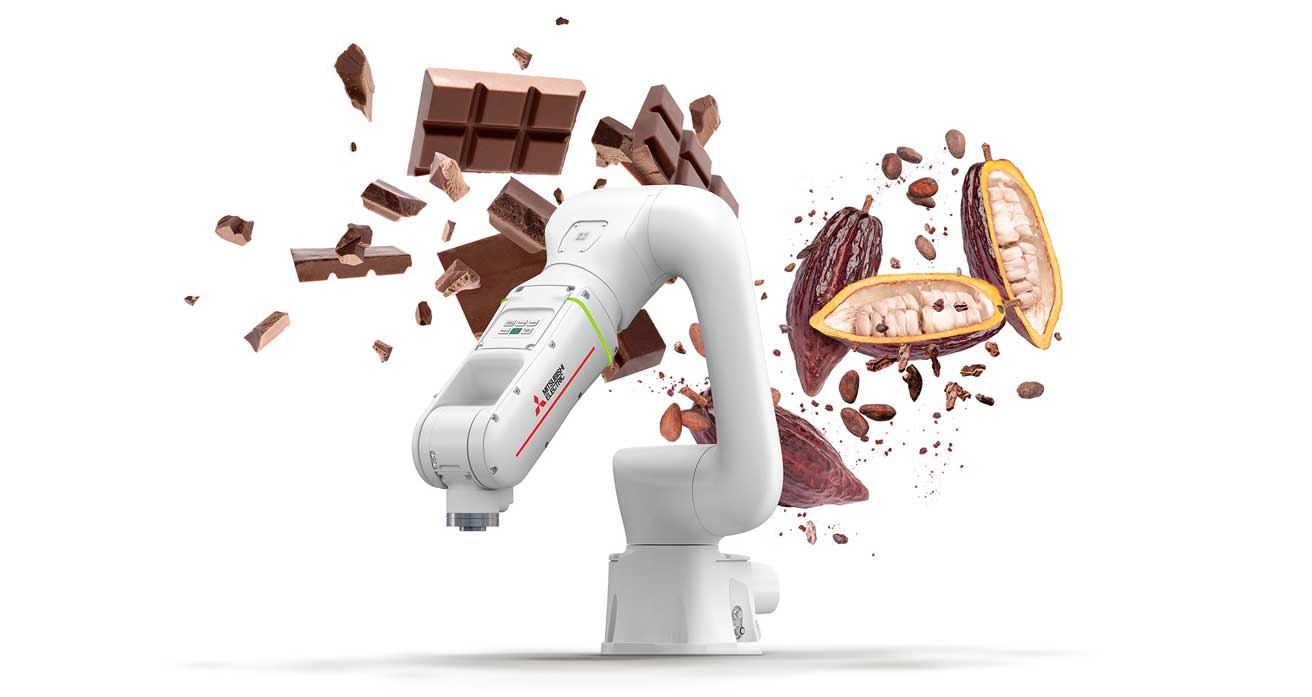
08.05.2023 | "Life is like a box of chocolates, you never know what you're going to get," said Forest Gump, apparently having never heard of Mitsubishi Electric. Because in contrast to the adventures of the film hero you know at Mitsubishi Electric exactly, what you get – especially when it comes to the quality of the products and their packaging.
You can do that live these days at the Interpack see. At the automation company's booth, everything revolves around chocolate in a modular, open and fully integrated line. The advanced quality control of chocolate bars and their packaging will be demonstrated.
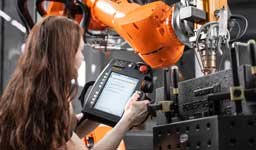 Programming robots | software and controls
Programming robots | software and controls
We take you to the fair and you can let your imagination run wild, applying to other areas of consumer goods industry to project. The performance in packaging technology can be increased through the use of robots and intelligent machine concepts, not only for sweet delicacies.
Intelligent robots for quality control
6-axis robot or articulated robot and collaborative robots from Mitsubishi Electric demonstrate typical work steps in the packaging industry. Optimization and acceleration are the focus of flexible quality control of chocolate bars and their packaging. An open, modular and fully integrated robot line should help to achieve these goals.
A conveyor belt runs through three stations where the technologies from Mitsubishi Electric and its partners are used. The products first pass through an X-ray system from Ishida. It detects foreign objects and contamination. Next stop is a deep learning solution from Robovision. This evaluates the quality of the packaging seal. Finally, a Mitsubishi robot picks up the product, lifts it and turns it over for weighing. An image processing system Cognex inspects it for the final inspection of the chocolate bars.
A second interactive display shows how quickly the robot can be put into operation. knowledge of robot programming are not needed. All functions can be easily set up on the intuitive robot platform via drag-and-drop. To demonstrate this, visitors are asked to program a cobot to pick up a giveaway.
AMR robot places with pinpoint accuracy
Accelerated stacking and quick storage of packaged goods is another focus in the factory or at the point of sale (POS). Autonomous mobile robots (AMR) do this. They combine Cobots with automatically controlled vehicles (AGV). The collaborative robot Melfa Assista from Mitsubishi Electric was installed on an AGV from Baumüller Installed. The robot uses this to transport a large number of chocolate bars and place them at the correct display station.
Scara robots for beginners in digital transformation
 28.06.2022/XNUMX/XNUMX | The new Melfa RH-CR Scara robot by offer a space-saving solution for those new to the Robotic. The industrial robots are particularly suitable for companies that are currently moving into... Automation and digital transformationstart.
28.06.2022/XNUMX/XNUMX | The new Melfa RH-CR Scara robot by offer a space-saving solution for those new to the Robotic. The industrial robots are particularly suitable for companies that are currently moving into... Automation and digital transformationstart.
Laboratory robot Agamede in Sars-CoV-2 diagnostics
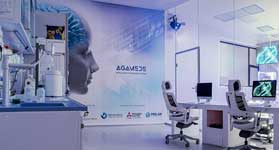
March 02.03.2022, XNUMX | The robot Agamede was developed at the Institute of Bioorganic Chemistry of the Polish Academy of Sciences (ICHB PAN) with the participation of technology partners Mitsubishi Electric, Perlan Technologies and Labomatica for applications in the laboratory automation
Articulated arm robots cut time in test bench for exhaust gas turbochargers in half
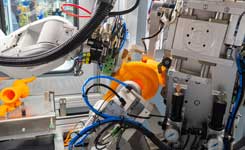 24.02.2021 | Hahn Automation has succeeded with a new development, the test procedure for the inline testing of Automotive components to cut in half. This requires three Articulatedtesting turbochargers overhead in a test bench. When it comes to robotics, the company from Rheinböllen relies on compact solutions from the Melfa series.
24.02.2021 | Hahn Automation has succeeded with a new development, the test procedure for the inline testing of Automotive components to cut in half. This requires three Articulatedtesting turbochargers overhead in a test bench. When it comes to robotics, the company from Rheinböllen relies on compact solutions from the Melfa series.
CNC + robot programming on one platform
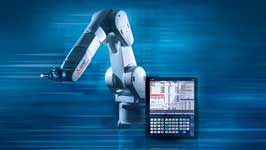 15.02.2022/XNUMX/XNUMX | The merging of robotics and CNC technology brings clear competitive advantages for machine builders and OEMs in the design of CNC machining centers. With the integration of industrial robots into the machine tool, the advantages of automation can be fully exploited and productivity increased. With the development of a uniform programming environment, the automation engineer creates a direct robot controller with which the Robot programming can be done via G-codes in the CNC machining center.
15.02.2022/XNUMX/XNUMX | The merging of robotics and CNC technology brings clear competitive advantages for machine builders and OEMs in the design of CNC machining centers. With the integration of industrial robots into the machine tool, the advantages of automation can be fully exploited and productivity increased. With the development of a uniform programming environment, the automation engineer creates a direct robot controller with which the Robot programming can be done via G-codes in the CNC machining center.
ESD certified robots for handling electrical components
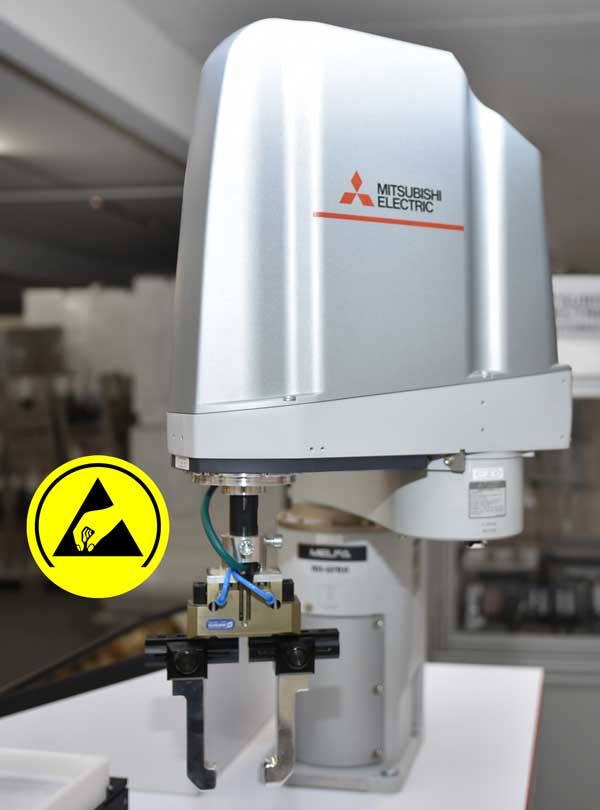 11.05.2020/XNUMX/XNUMX | uncontrolled electrostatic discharges, ESD for short, jeopardize product integrity. For applications such as those found in PCB assembly, product testing, packaging or visual inspection, ME now offers proven industrial robots ESD certified to.
11.05.2020/XNUMX/XNUMX | uncontrolled electrostatic discharges, ESD for short, jeopardize product integrity. For applications such as those found in PCB assembly, product testing, packaging or visual inspection, ME now offers proven industrial robots ESD certified to.
The Melfa industrial robot the FR series have been used to obtain in much of the ElectronicsESD certification required for production was subjected to a demanding type approval. As a result, the ESD/EPA conformity according to IEC 61340-5-1:2016 / ANSI/ESD S20.20:2014 was confirmed. In addition to RH-FR Scara models, the certification also includes RV-FR Articulated with a load capacity of up to 20 kg and a repeatability of up to ±0,02 mm.
Plastic parts are now also ESD compliant
All accessible elements and surfaces are designed to be electrically conductive. For Articulated That's generally the case, because they're usually off Metal are made. With the Scara robots, parts of the surface such as the cover of the quill are made of Plastic. However, they can be coated with a conductive special paint for electronic applications. As a result, they are also demonstrably ESD compliant.
With both industrial robots, ESD risks in production can be excluded. In Japan, Mitsubishi Electric has been successfully using industrial robots to manufacture its own for decades Controllers a. Now the Melfa robots can also be used in the German market and other regions can be ordered with a certificate.
“In general, speed, precision and reliability always speak for our Melfa industrial robots. Now that they can also be supplied with an ESD certificate, even more manufacturers in electronics production can now benefit from this,” says Michael Finke, Product Manager Robots.
Handling robots for efficient forklift add-on parts production
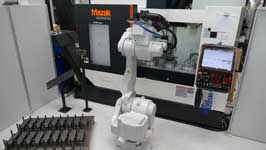 07.02.2020 | There are still mechanical engineering companies that manufacture the components they need exclusively in Germany and are also profitable at the same time. the Durwen mechanical engineering GmbH manages this because it has implemented a high degree of automation in its production. In making his Attachments for forklifts For example, the control of the CNC milling machines communicates directly with the handling robots and does without a master.
07.02.2020 | There are still mechanical engineering companies that manufacture the components they need exclusively in Germany and are also profitable at the same time. the Durwen mechanical engineering GmbH manages this because it has implemented a high degree of automation in its production. In making his Attachments for forklifts For example, the control of the CNC milling machines communicates directly with the handling robots and does without a master.
Archive for industrial robot news
- Learning factory for young people on industrial robots
- New safety functions for industrial robot series
- Trends for robots and automation in packaging technology
Learning factory 4.0 for young people on industrial robots
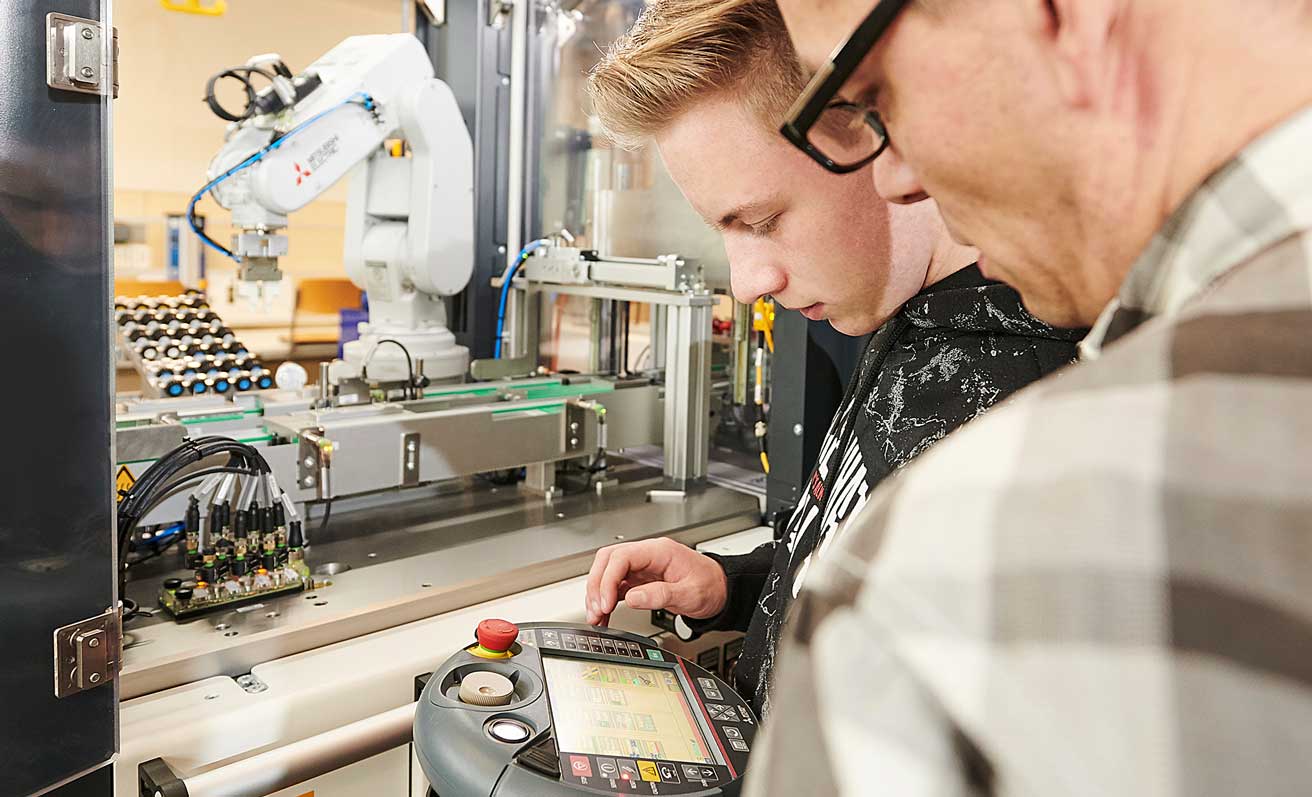
02.07.2019 | In Reutlingen has one competence Network a training facility realized by companies in the region for trainees and students in the metal, electrical and IT departments, the essential features of the Industry4.0 makes it tangible. The system consists of two parts robot types from Mitsubishi Electric with different kinematics. With their compact design, simple programming and open interfaces, these meet the requirements of both the school environment and the industrial networking.
 With partner Kuka from Harting connector to robot connectivity
With partner Kuka from Harting connector to robot connectivity
The state of Baden-Württemberg and the business community in the high-tech region of Stuttgart are hoping to strengthen the local skilled labor market through training that is strongly geared to industrial needs. Since the end of September 2018, the Reutlinger Ferdinand von Steinbeis School over a Learning Factory 4.0. In this laboratory application, the majority of the approximately 2300 trainees and students at the commercial school with a technical high school learn the digitized Automationknow s processes. This place of learning was initiated and largely financed by the district of Reutlingen as the school authority.
The application represents a production line for model cars, which consists of four assembly cells. Cell 1 is with a 6 axis articulated robot of the type RV-2F-1D1, which takes two axes from the component supply and equips the supplied workpiece carrier.
Cell 2 has the task that a linear unit grips the base body and joins it with the axes. Cell 3 houses one 4 axis Scara Robotics RH-3FH5515. This takes a motor from the component supply and adds it to the base body. Finally, in cell 4, a checks Camera systemwhether the configuration has been carried out correctly before the product is released for release.
Increasing robot density in the automotive industry has helped increase sales of industrial robots worldwide. The Industry 4.0 aspect and the special feature of this training system are that every car configured differently and is produced as a one-off: The customer puts together his dream car from options (chassis color, wheel width, engine size - represented by different elements of the model construction kit) on a mobile phone, tablet or PC and sends his order directly to the system, which starts assembling the desired combination of building blocks begins.
 Reading tip: Three ways to get started with generative AI
Reading tip: Three ways to get started with generative AI
"The school wanted to depict the idea of Industry 4.0 in a visible and comprehensible way," says Wolfram Zielke, robot specialist at ME. "I4.0 and the "Internet of Things" (IoT - "Internet of Things") are shown when I have a modular system in which all components are networked and can be influenced via the Internet and these are as open, flexible and expandable as possible is. This has been achieved here in a particularly clear way.”
Industrial reality on a small scale
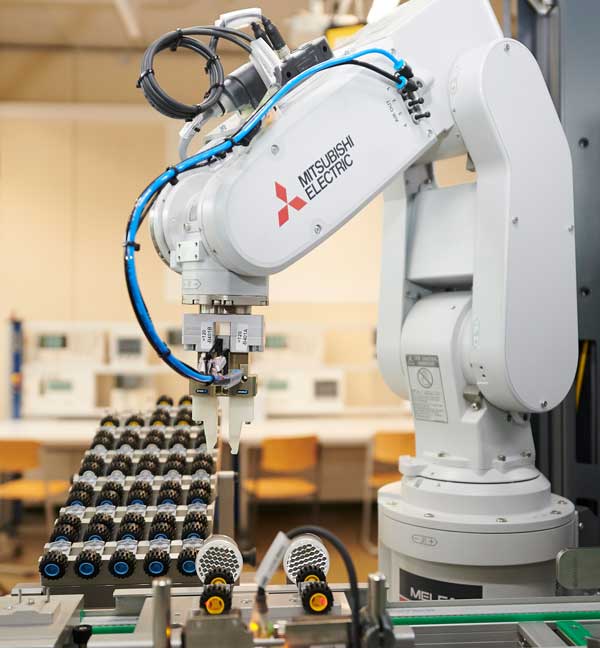 Even if the learning factory produces toys, the compact form of the system corresponds to the applications in the manufacturing industry, in which the Lot size 1 is no longer a dream of the future. The system differs from its industrial counterpart only in that, for teaching purposes, a large range of different automation concepts such as different robot kinematics, linear units, Pneumatics, vision systems, control technology, etc. were introduced, while cost-oriented engineering in industry strives to achieve goals with as few components as possible.
Even if the learning factory produces toys, the compact form of the system corresponds to the applications in the manufacturing industry, in which the Lot size 1 is no longer a dream of the future. The system differs from its industrial counterpart only in that, for teaching purposes, a large range of different automation concepts such as different robot kinematics, linear units, Pneumatics, vision systems, control technology, etc. were introduced, while cost-oriented engineering in industry strives to achieve goals with as few components as possible.
George Seifriz, deputy principal of the Ferdinand von Steinbeis School, praises the robot models: “The smallest industrial robot weighs just 18 kg. These are very compact devices that are ideal for our limited space. In addition, the simple programming for the students to get to know is a great start. These are completely normal industrial robots with full functionality.” He also cites good experiences with the support provided by the automation specialist – the educational institution is already using two of the company’s self-sufficient robots in the classroom.
Intuitive software for programming and commissioning
The teachers therefore already know RT Toolbox3 software for creating robot programs and planning applications. This can not only be installed on any number of PCs, but also enables the integration of CAD data to simulate the environment. This allows several students to try out programs offline and without risk at the same time and visualize them in 3D.
This is by no means a didactically prepared teaching program, but the standard package for industrial use - with one important individual aspect: "The software is fun and quickly leads to the goal," says Frank Kugler, technical teacher at the Steinbeis School. "I don't have to motivate anyone to do this. When we work on and with the system, everyone is fully involved.”
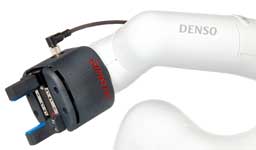 Robotic grippers, EOAT, gripper kits for cobots and industrial robots
Robotic grippers, EOAT, gripper kits for cobots and industrial robots
Equally relevant for teaching and industry is the simple commissioning of the industrial robots by plugging an option card such as Profibus into the controller or connecting valves for the grabtechnology. This eliminates a large part of the manual input of data as well as the implementation of cumbersome zero point runs. The teaching box for entering spatial points of the robot also supports rapid target attainment. Its intuitive user guidance makes it easier for newcomers and experienced users alike to control the movements of robots and to carry out extensive diagnostic and monitoring functions with comprehensive performance.
Openness as a basic requirement for Industry 4.0
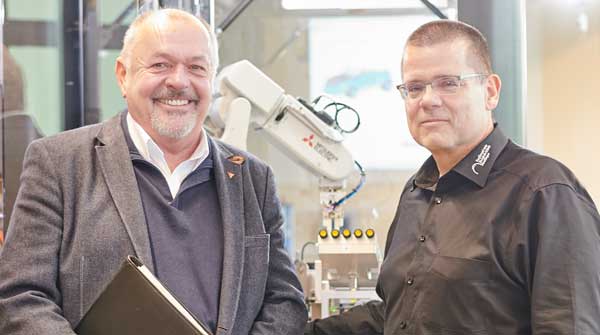 All of the automation's systems are characterized by their openness - a basic requirement for I4.0. They are flexible, expandable, generously equipped with interfaces, communicate via Ethernet directly with the outside world and allow the output of operating data as well as being equipped with intelligent sensors. As a true I4.0 facility, the learning factory in Reutlingen is anything but static.
All of the automation's systems are characterized by their openness - a basic requirement for I4.0. They are flexible, expandable, generously equipped with interfaces, communicate via Ethernet directly with the outside world and allow the output of operating data as well as being equipped with intelligent sensors. As a true I4.0 facility, the learning factory in Reutlingen is anything but static.
"It's alive," says Mr. Seifriz, already enthusing about planned expansions. "We imagine a warehouse connection with automatic assembly and the virtualization of the entire system by creating a digital mirror image (Digital Twin) in the cloud. Then we can also work with the system in the classroom and implement maintenance applications, for example. Something like this is ideal for projects in engineering training.”
New safety functions for industrial robot series
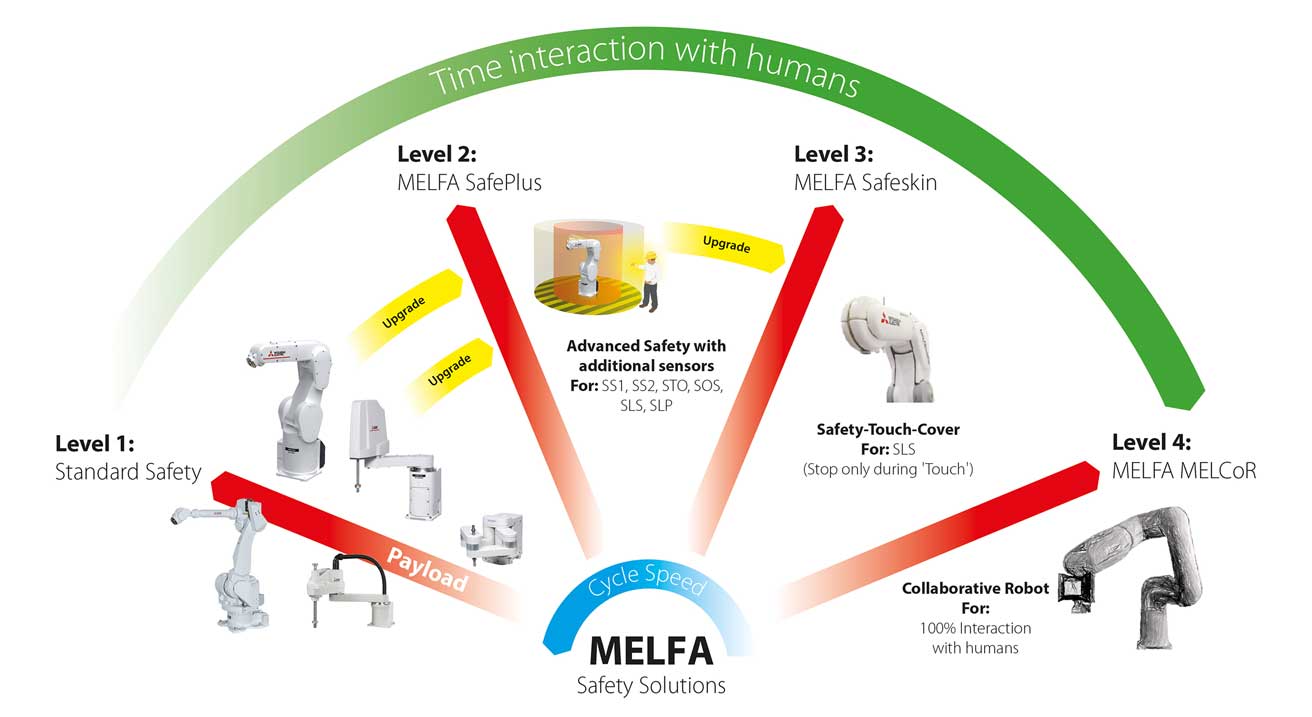
25.02.2019/XNUMX/XNUMX | Mitsubishi Electric offers a large number of new relevant safety innovations such as the safety option Melfa Safeplus II. With this, the speed of the robot in the individual working levels (x, y or z) can be controlled independently of one another, so that cycle times can be increased and the working distance between humans and intelligent industrial robots can be reduced.
Of course, the safety option also applies to the new robot series Melfa FR. It has an expanded range of safety I/Os that can be interconnected in a matrix in order to implement additional standard-compliant safety functions in accordance with ISO/TS 15066 with additional sensors.
With the Melfa Safeplus II option, the Industrial robot speed control independently of each other in the individual work planes X, Y and Z. Equipped with the appropriate monitoring sensors, the industrial robot can approach at a safe speed while moving at the same speed on the other levels. In this way, man and machine can dynamically work together more efficiently.
 Graphic HMI operator terminals for industrial automation
Graphic HMI operator terminals for industrial automation
If the overall system is supplemented with the connection of modern laser scanners and corresponding area definitions, the speed of an approaching person can be calculated and the duration of the safely reduced speed reduced. "Our safety levels are based on our standard devices and can therefore also be retrofitted for existing industrial robots," says Michael Finke, Product Manager Robots and refers to the flexibility of the concept. "Melfa Safeplus" robots can also be equipped with a "Melfa Safeskin" sensor skin to enable human-robot collaboration."
A collaborative Robot Melcor with standardized components of the Melfa family is currently still in the testing stage. This then compliments the automation specialist's extensive industrial robot portfolio.
Trends for robots and automation in packaging technology
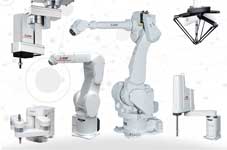 03.12.2018 | Also the Packaging Industry adapts under the influence of global influencing factors such as regulation, shortage of skilled workers and digital transformation to the changed market requirements. The industry is increasingly relying on solutions such as human-robot collaboration, artificial intelligence and intensive data processing. Malte Schlueter, Global Key Account Director F+B/CPG, gives an insight into how the industry will develop.
03.12.2018 | Also the Packaging Industry adapts under the influence of global influencing factors such as regulation, shortage of skilled workers and digital transformation to the changed market requirements. The industry is increasingly relying on solutions such as human-robot collaboration, artificial intelligence and intensive data processing. Malte Schlueter, Global Key Account Director F+B/CPG, gives an insight into how the industry will develop.
Archive for articulated robot news
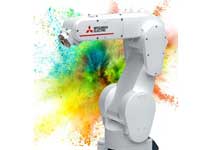 2019 and older | Here you will find more publishments to articulated robots like a version with Atex certification, with a 3D vision system from Isra Vision or via one flow stacker Application for sensitive components.
2019 and older | Here you will find more publishments to articulated robots like a version with Atex certification, with a 3D vision system from Isra Vision or via one flow stacker Application for sensitive components.

